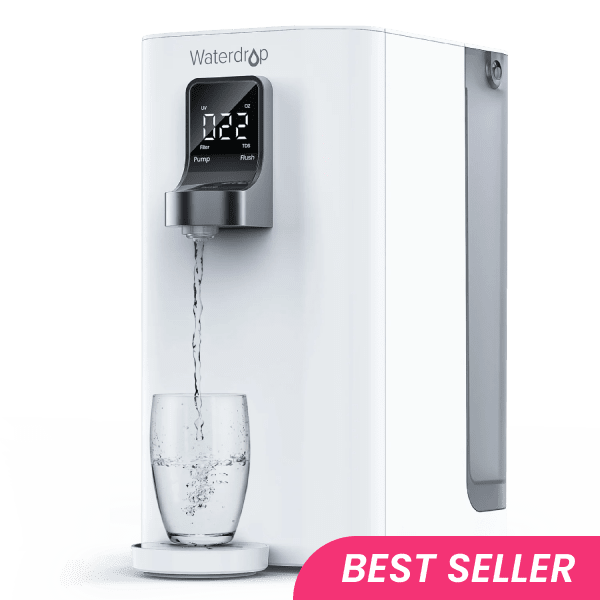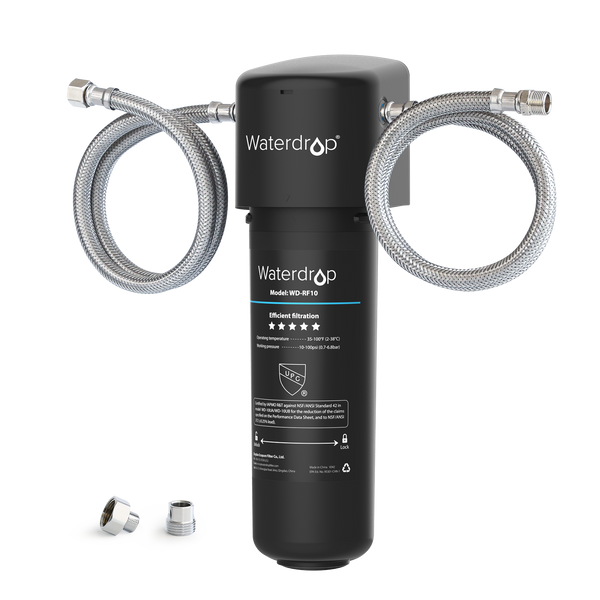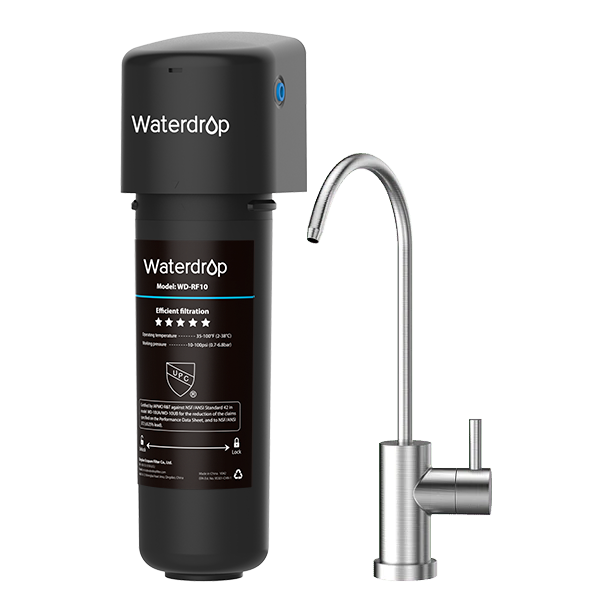Make Your Water Lead-Free With These Proven Tips
by Dr. Jonathan Doyle - Updated September 03, 2020
How come my water is contaminated with lead? Does it matter if I drink water with a high level of lead? How I can remove it? Waterdrop is here to solve the mystery.
Table of Contents
We find Lead in drinking water nowadays, and this is due to the Lead plumbing fixtures, pipes, and other faucets used in transporting the water from the source to our homes. Another possible culprit is the use of archaic plumbing system – pipe fittings, welding solder, and plumbing fixtures, especially those made before 1986.
A closer look at the contamination process of tap water by lead.
Over the last twenty years, we have seen a decline in the exposure levels of Lead in tap water. We have the well-thought-out the 1986 and 1996 actions and amendments of key regulations like the Environmental Protection Agency's Lead and Copper Rule and the Safe Drinking Water Act to thank for this.
However, we are still left with exposure to Lead from Lead service lines running throughout homes or those linking our homes to the main water lines. Interestingly, Lead is almost an inseparable aspect of home plumbing fixtures, including homes that do not run on Lead service lines.
If a plumbing system is soldered with Lead, contain brass, or chrome-plated brass faucets and galvanized iron pipes, you will most likely find deposits of Lead. Sometimes, traces of Lead are found in plumbing systems that do not transport drinking water – the handwashing sinks, the spigots, the hoses, and lab faucets. It is also commonly found in a couple of drinking water fountains that use Lead-lined tanks.

Corrosion is the chemical reaction that leads to the deposit of Lead into drinking water. When the metallic parts of a Lead-based plumbing system dissolve, there is a deposit of Lead in the water. The results of this deposit can be serious in some situations – low mineral content and/or high acidity.
The contamination level depends on factors like the temperature, the alkalinity/acidity, and the water's mineral content. Others include the presence/absence of protective scales and coatings in the pipes; the volume of Lead that seeps into the water; the volume of water the pipes are carrying; and the amount of time the water spends in the pipes.
Check if your tap water is contaminated with lead.
Unlike other common water contaminants, it is impossible to detect Lead by drinking, smelling, or tasting the suspected water. The only feasible and effective method of testing is to see if your household plumbing or service line has possible Lead sources.
Is there a Lead service line supplying water to your home? (Your water provider will be in the best position to answer this question.) If yes, inquire about ongoing plans to help with the decontamination. It is essential to be careful about Lead contamination-related works on your service line. It does not only take time – up to six months – but also may lead to even more significant problems if done improperly.
You may also ask for a water testing procedure from your public water system authorities. Alternatively, you can do this on your own by consulting a certified laboratory. The results of water sampling tests depend on factors like the flow of water, the sampling method adopted, the season and time of the day the test was conducted.
Is there any risk associated with using water contaminated with lead?
Unlike adults, young children have no safe blood level when it comes to Lead poisoning. Hence, it is important to remove or regulate all potential sources of Lead exposure to kids. The maximum water pollutant level goal for Lead set by the EPA is zero. This underlines the severity of the harm Lead can cause to human health.
If left in the atmosphere for too long, toxic metals like Lead may accumulate in the body. The extent of the resulting damage varies and depends on a couple of factors. These include the amount consumed, the health of the individual, and the water's chemical conditions.
For instance, infants are at higher risks of Lead-contamination from water. This is because they consume a large volume of water relative to their body size. Lead-contaminated water may cause no harm to the body when used to bath or shower. This is because the human skin is impermeable to Lead in water.

Here is what to do in the case of exposure to Lead-contaminated water.
The first step is to reach out to your health care provider and ask for a blood Lead test. Do not wait for symptoms; there are hardly any in most children and adults. In the case where a blood Lead test is not required, your physician will offer post-exposure recommendations. You may expect more adverse effects as the levels of Lead in the blood increases.
Blocking or reducing the exposure of lead in water.
If you have reasons to believe that your water is contaminated via any of the ways described above, it becomes necessary to reduce or block the exposure.
The first option here is to flush your water, especially in cases where the water stays for over six hours in the lead pipes. This will ensure that your household Lead plumbing fixtures are less-exposed to Lead.
You should also run your faucet on COLD for about two minutes before taking water for cooking or drinking. Hot or warm tap water may have higher levels of Lead. Note that boiling tap water does not reduce Lead content. It is also advisable to keep your faucet aerator very clean at all times.
Another way to reduce Lead exposure in tap water is to run your water through a 'point of use' filter before use. This 'point of use' filter must be certified by an independent testing organization to be free of Lead – the NSF/ANSI standard 372 for Lead-free material and the NSF/ANSI standard 53 for Lead removal. This filter will come handy to ensure Lead-free cooking or drinking water if a Lead service line serves your household.
We offer'point of use'water filters in the market.
At Waterdrop, we are committed to making clean, purified filtered water available to everyone. This is why we have invested ourselves in offering products specially designed to help with water purification in various places, especially offices and homes.
We understand that different people have different needs. Hence, we offer different filters for various water treatment needs – from under sink to refrigerator and every other source of water around you. Some of these products include the faucet and pitcher cartridge, the refrigerator water filter, the smart RO system, and the under-sink filtration system.
Our water filtration system fixtures are made from certified Lead-free materials, evident in the NSF 372 claims. That is not all; we also have NSF 42, 53, and 401 certifications on some of our filters. We guarantee the safety of our products for use, and more importantly, their capabilities to deliver tasty, clean, and healthy water at all times.
At Waterdrop, we are confident that purified water can be the gamechanger in our quest to live healthy and right. This is why we continue to offer the better products in this regard. Do you have any questions about our products and how they can help you in your quest for clean, purified water? Feel free to look through our offerings here or reach out via any of our communication lines.
Contaminants Detected in Fruitland Water Special Service District
30
Contaminants
EXCEED EWG HEALTH GUIDELINES
EXCEED EWG HEALTH GUIDELINES
30 Total Contaminants in Your Water
Water Provider
Fruitland Water Special Service DistrictPopulation Affected
120,000Water Source
Ground waterExceeds Guidelines
Others Detected















